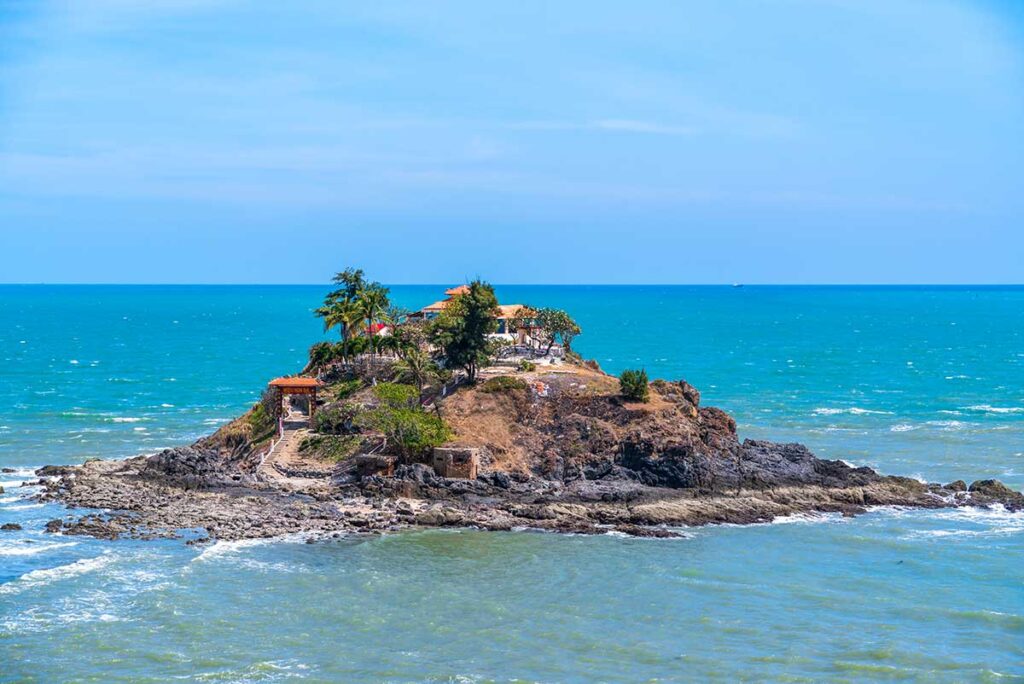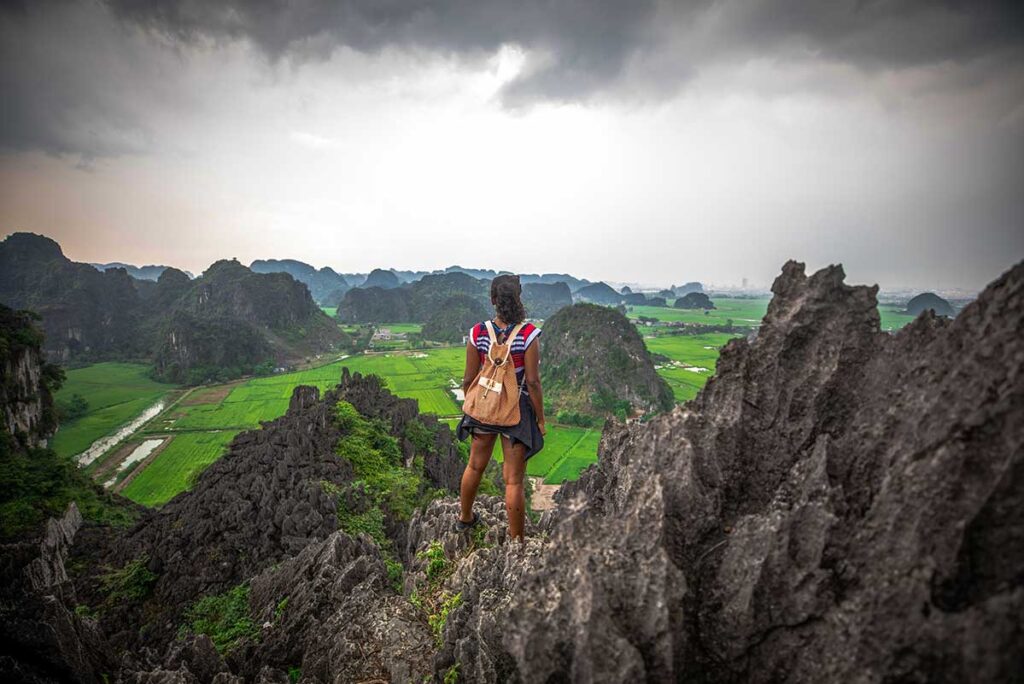What is Hon Ba Island like?
Hon Ba Island in Vung Tau is a tiny rocky islet, about 200 meters off the coast near Nghinh Phong Cape and the base of Small Mountain. Covering just over 5,000 square meters, it is uninhabited except for a single temple, making it one of the smallest but most distinctive sights in the city.
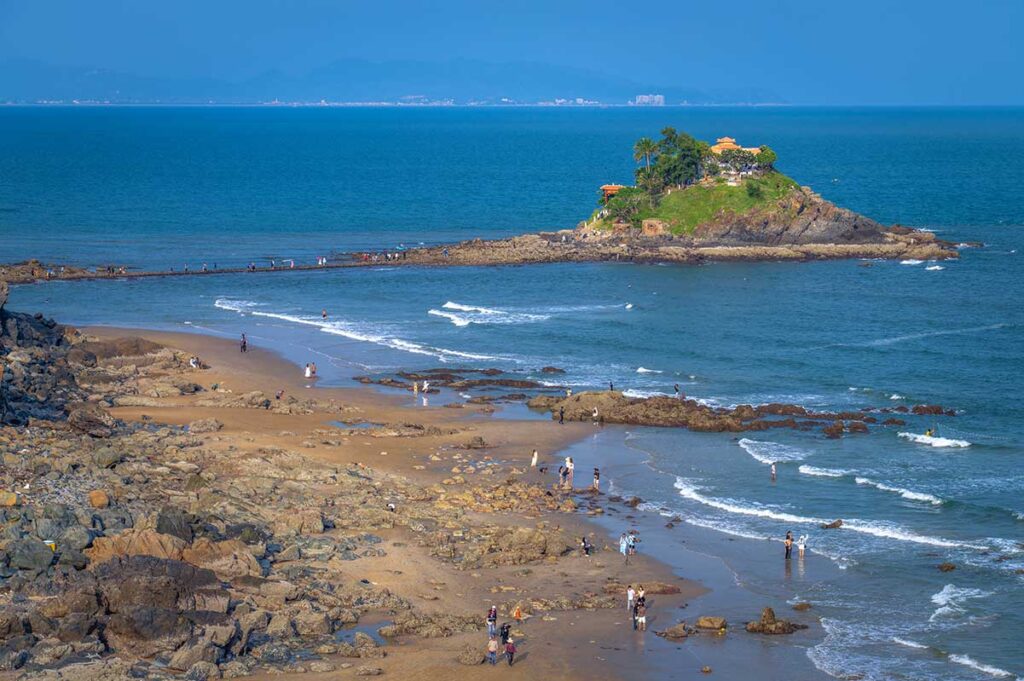
The main attraction is the stone pathway that appears at low tide, allowing you to walk across the sea to reach the temple. This path only emerges for a few hours at a time, and while it’s not rare, you do need to plan your visit around the tides. The experience of walking the exposed seabed, with waves lapping on either side, is what makes Hon Ba unique.
The atmosphere on Hon Ba Island itself is quiet and simple. Apart from the temple and views of Vung Tau’s coastline, there isn’t much else to see or do. For some, that makes it a peaceful, almost sacred spot; for others, it may feel underwhelming compared to larger attractions in the city.

It’s worth noting that there is another Hon Ba Island in Con Dao, which belongs to the same province but is completely different. The Vung Tau island is much smaller and focused mainly on the temple and the sea path, while the Con Dao one is known for its beaches and nature.
Hon Ba Temple
History
Hon Ba Temple was first built in 1881 by Ho Quang Minh, a settler from central Vietnam. Some sources mention 1781, which has led to a bit of confusion in guides, but the more widely accepted date is the late 19th century. The temple was dedicated to the Water Dragon Goddess (Thủy Long Thần Nữ), a female deity believed to protect fishermen by ensuring safe weather and calm seas.
During the French colonial period, the island was briefly renamed Archinard Island, after a French officer who fired cannon shots at the temple in 1939. The building only suffered minor damage, but the officer later died in an accident, which cemented the temple’s reputation as sacred in local belief. Despite the attempted renaming, locals continued to call it Hon Ba.
In 1971, a group of migrants from Trà Vinh contributed to a full renovation of the temple, which is why it remains in relatively good condition today.
Architecture and Worship

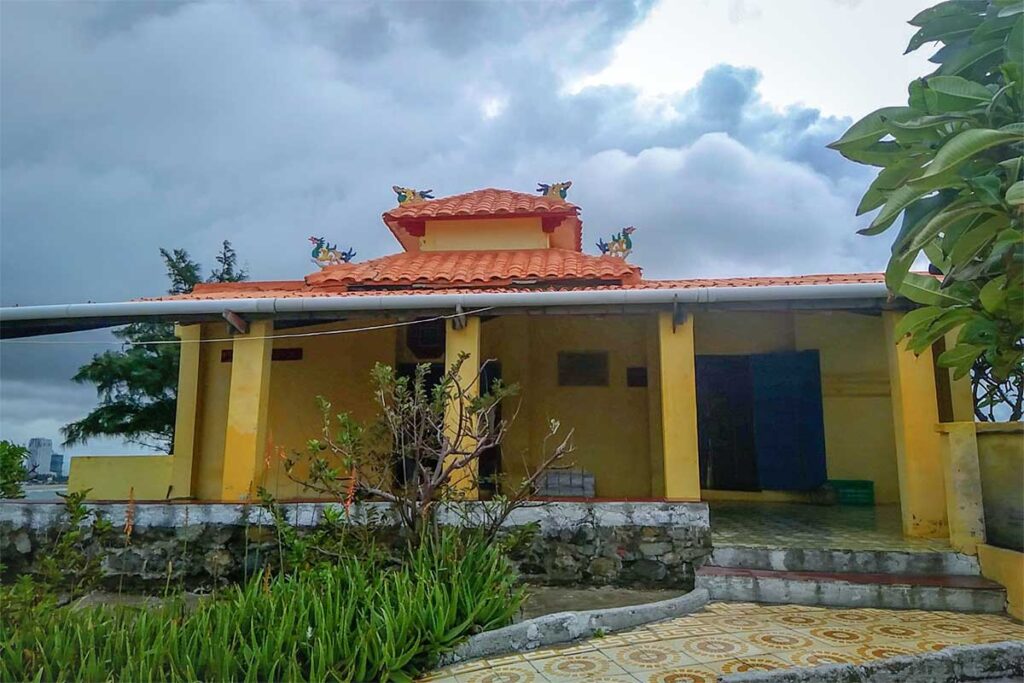
The temple is small and modest, closer in size to a house than a large pagoda. It has a tiled roof with two levels, decorated with stylized phoenix figures. A short flight of stairs leads to the main hall, where worshippers burn incense and leave offerings.

Inside, the altar is dedicated to the Ngũ Hành Nương Nương, the Five Goddesses of the Elements (Metal, Wood, Water, Fire, and Earth). This reflects the temple’s connection to both nature and traditional Vietnamese spiritual beliefs.
Hon Ba Temple is still active as a place of worship. Each year, four ceremonies are held in January, April, July, and October (lunar calendar), when locals gather to pray and make offerings. These festivals give the island a lively atmosphere, in contrast to its usual quietness.
Other features
Hon Ba Island also has a small wartime bunker, measuring about 6 by 3 meters. It was used as a secret meeting site for revolutionaries, and while there is little to see today, it adds a layer of historical significance.
The island is sometimes called “Ba Vien Dan” (Three Cannon Shots), a name that comes from the French officer’s failed attempt to destroy the temple.
What you need to know about visiting Hon Ba Island
Visiting Hon Ba Island is straightforward, but the timing of the tides and a bit of preparation make all the difference. Below are the key things you should know before planning your visit.
1. Tides & Timing
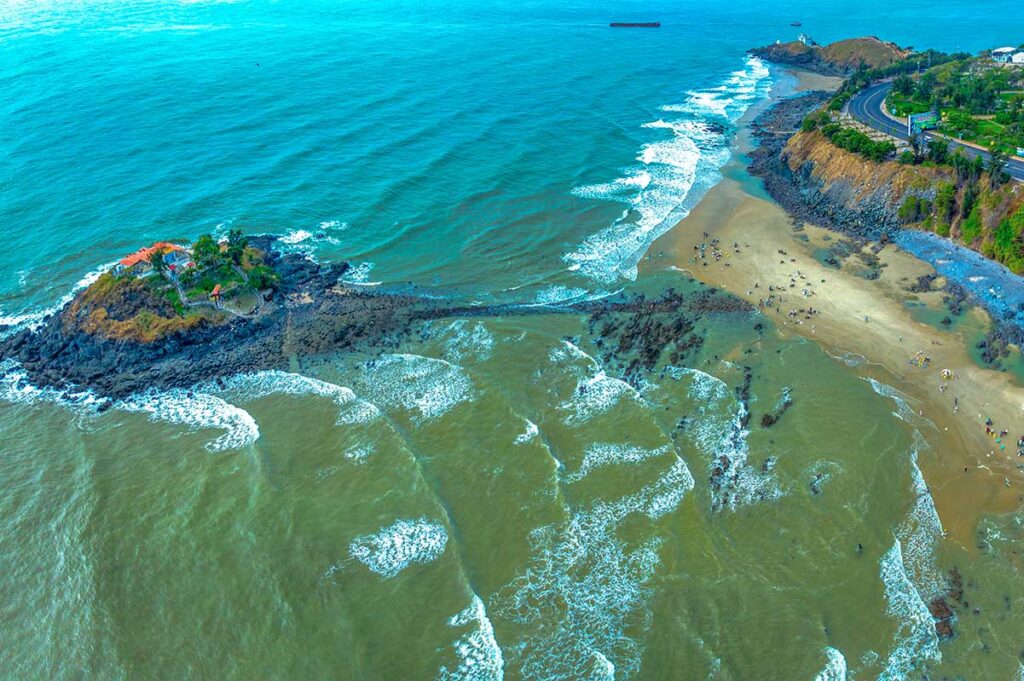
Access to Hon Ba depends on the semi-diurnal tides, which means the sea goes through two high tides and two low tides each day. In theory, the stone path is revealed daily, but in practice you can only use it when low tide happens in daylight hours.
The path is usually exposed for around two to three hours at a time. Many guides mention the 14th–16th days of the lunar month because these dates often have the lowest tides, but the crossing can appear on other days too. The safest approach is to check a tide schedule before going: Vung Tau tide forecast.
If the timing doesn’t work out, there are sometimes small boats or motorboats available that can take you around to the east side of the island.
2. Footwear & Crossing Path
The crossing is not a smooth walkway — it’s rocky, uneven, and in many places covered with oyster shells that can cut bare feet. The stones can also be slippery.

It’s strongly recommended not to go barefoot. Instead, wear water shoes, old sneakers, or sturdy sandals that you don’t mind getting wet. Expect that the first part of the walk near shore may still be in shallow water.
3. Dress Code & Respect
While this is a small local temple and not as formal as larger pagodas, it is still a sacred place. Wearing shorts and tank tops is acceptable, but avoid going in beachwear such as bikinis or swim trunks.
If you want to participate in the local custom, bring a small offering such as fruit, incense, or flowers.
4. Location & Back Beach Connection
Hon Ba sits just off Back Beach (Bãi Sau), about 200 meters from shore at Nghinh Phong Cape, right at the base of Small Mountain. The southern end of Back Beach is the closest access point, though the beach itself stretches for several kilometers. If your hotel is further up the coast, you may still need a short ride to reach the starting point.
A common way to plan a visit is to relax on Back Beach until the tide drops low enough to cross.
5. View from Jesus Christ Statue

The island lies right below Vung Tau’s most famous landmark, the Jesus Christ Statue on Small Mountain. From the statue’s shoulders or even from its base area, you get panoramic views over the sea and a perfect angle of Hon Ba Island.
Even if you don’t plan to walk across, it’s worth appreciating the view from above.
Is Hon Ba Island worth visiting?
The main draw of Hon Ba Island is the experience of walking the sea path when the tide recedes and reaching a temple that sits alone in the water. It’s a simple but unusual activity, and for many visitors that moment is more memorable than the island itself.
The temple is small and modest, especially compared to the larger, more elaborate religious sites you’ll find elsewhere in Vietnam. If you go in expecting a major attraction, you may be underwhelmed.
That said, if you are already spending time in Vung Tau and the tide schedule happens to line up, Hon Ba is worth the detour. The walk across the exposed seabed is unique, the views back toward the city are pleasant, and the visit can easily be combined with Back Beach or the Jesus Christ Statue.
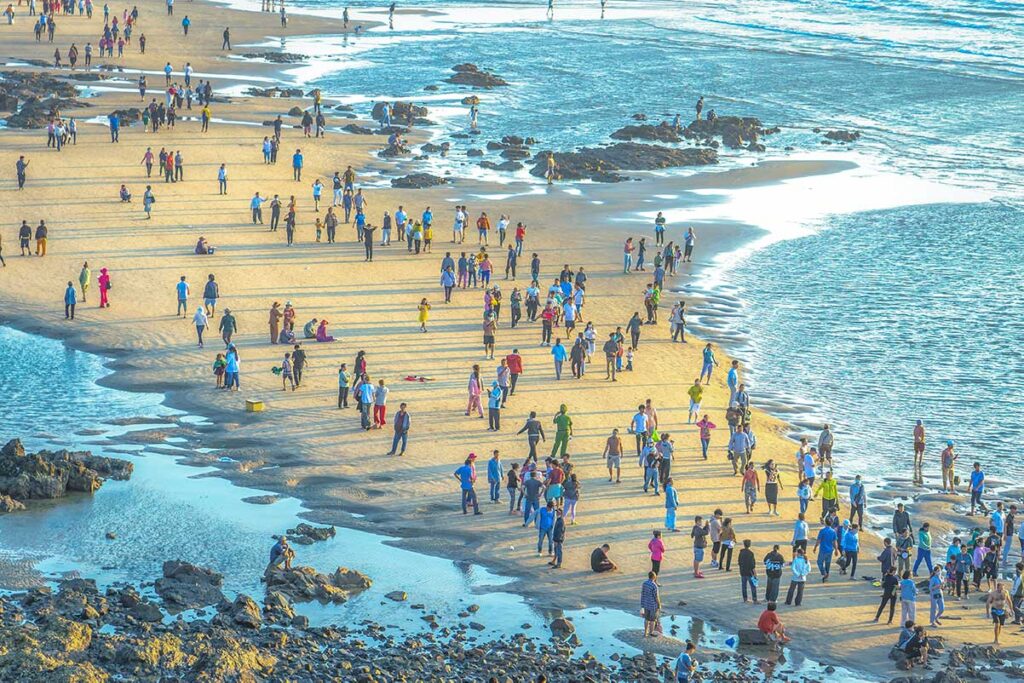
If you’re short on time, don’t have proper shoes for the rocky path, or prefer to avoid the crowds that sometimes gather, it’s also perfectly fine to admire Hon Ba Island from the shore or from above on Small Mountain.
